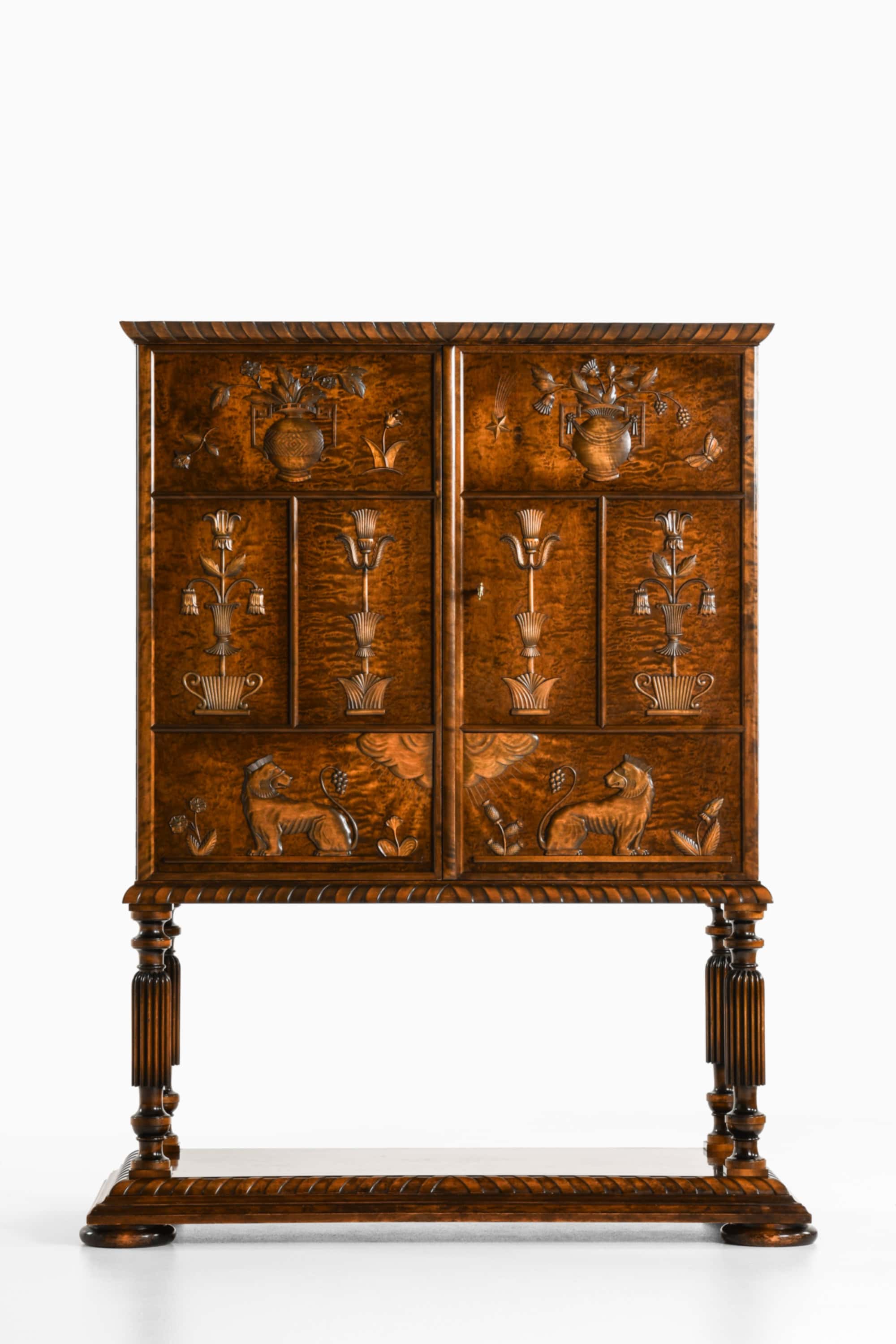Axel Einar Hjorth cabinet
This cabinet, known as the “Metropolitan” model, was designed by Axel Einar Hjorth and produced by Albin Johansson in Sweden during the 1920s. It is a rare example of Swedish Grace, a style that emerged in the interwar period combining classical restraint with modern elegance. This particular version corresponds to the model exhibited at the Metropolitan Museum of Art in New York during the 1927 exhibition “Swedish Contemporary Decorative Arts” an event that marked the international recognition of Swedish design.
The cabinet structure is constructed primarily from birch and ebony, presenting a contrast of warm and dark wood tones. The birch exhibits a golden-brown finish that emphasizes its subtle grain, while the ebony is used for accents, trim, and interior surfaces, offering a deep, almost black contrast. The two front doors are fitted with glass panels framed by decorative ebony overlays in geometric and curved configurations that recall neoclassical motifs and early Art Deco influences. The doors open to reveal a dark-stained interior with a single fixed shelf, suited for storage or display.
The piece rests on a set of finely turned and fluted legs, arranged in two pairs front and back, connected by arched stretchers on all sides. This open leg construction provides vertical emphasis and lifts the cabinet visually, lending it the airiness and elegance characteristic of the Swedish Grace period. The craftsmanship of the legs, joinery, and overlays displays a high degree of technical precision and decorative control, emphasizing form without unnecessary ornamentation.
Axel Einar Hjorth (1888–1959) was one of Sweden’s most important early modernist designers. Known for his versatile approach, Hjorth worked across neoclassical, functionalist, and expressive styles, depending on the commission and context. During his tenure as chief designer for Nordiska Kompaniet (NK) in the 1920s and 1930s, he created some of the most iconic pieces of Swedish design. His early work, such as this cabinet, is highly regarded for blending traditional craftsmanship with modern abstraction.
The cabinet remains in very good vintage condition, with minor wear consistent with age. The wood surfaces show a developed patina, while the glass and structural elements are intact and undamaged. This piece exemplifies museum-quality decorative arts and represents the intersection of craftsmanship, national identity, and modern aesthetics in early 20th-century Sweden.
Dimensions are 110 cm wide, 40 cm deep, and 141.5 cm in height, which corresponds to approximately 43.3 inches by 15.7 inches by 55.7 inches.
Literature
Christian Björk, Thomas Ekström, Eric Ericson, “Axel Einar Hjorth Möbelarkitekt”, Signum, Lund 2009, to be compared to the model reproduced on p. 29
Dimensions (cm) | W: 110 / D: 40 / H: 141.5 |
| Producer | Albin Johansson |
| Decade | 1920s |
| Country | Sweden |
| Style | Swedish Grace |
| Material | Birch, Ebony, Glass |
| Designed in | 1920s |
| Item Number | 250123 |
Axel Einar Hjorth
Axel Einar Hjorth (1888–1959) was a Swedish furniture designer and architect whose stylistic range and prolific output made him one of the most versatile and dynamic figures in early 20th-century Scandinavian design. Best known for his luxurious...
Read more


























